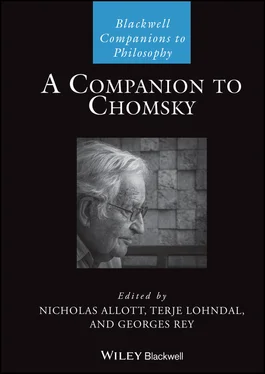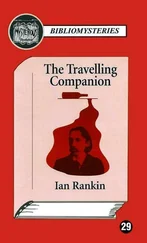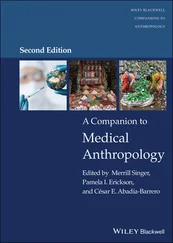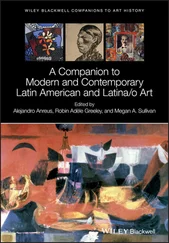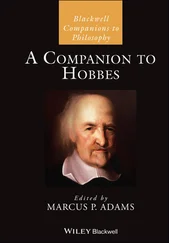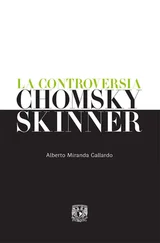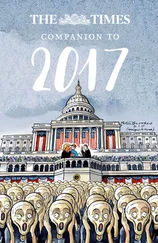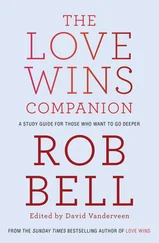A Companion to Chomsky
Здесь есть возможность читать онлайн «A Companion to Chomsky» — ознакомительный отрывок электронной книги совершенно бесплатно, а после прочтения отрывка купить полную версию. В некоторых случаях можно слушать аудио, скачать через торрент в формате fb2 и присутствует краткое содержание. Жанр: unrecognised, на английском языке. Описание произведения, (предисловие) а так же отзывы посетителей доступны на портале библиотеки ЛибКат.
- Название:A Companion to Chomsky
- Автор:
- Жанр:
- Год:неизвестен
- ISBN:нет данных
- Рейтинг книги:3 / 5. Голосов: 1
-
Избранное:Добавить в избранное
- Отзывы:
-
Ваша оценка:
- 60
- 1
- 2
- 3
- 4
- 5
A Companion to Chomsky: краткое содержание, описание и аннотация
Предлагаем к чтению аннотацию, описание, краткое содержание или предисловие (зависит от того, что написал сам автор книги «A Companion to Chomsky»). Если вы не нашли необходимую информацию о книге — напишите в комментариях, мы постараемся отыскать её.
Companion
Companion
A Companion to Chomsky
A Companion to Chomsky — читать онлайн ознакомительный отрывок
Ниже представлен текст книги, разбитый по страницам. Система сохранения места последней прочитанной страницы, позволяет с удобством читать онлайн бесплатно книгу «A Companion to Chomsky», без необходимости каждый раз заново искать на чём Вы остановились. Поставьте закладку, и сможете в любой момент перейти на страницу, на которой закончили чтение.
Интервал:
Закладка:
Peter Svenoniusis a Professor at the Center for Advanced Study in Theoretical Linguistics at the UiT, The Arctic University of Norway. He works on syntax and its interfaces with semantics, morphology, and phonology.
Rosalind Thorntonis a Professor at Macquarie University. Her work focuses on children's acquisition of syntax and semantics within the biolinguistic framework of linguistics.
Patrick C. Trettenbreinis a PhD Candidate in the Department of Neuropsychology at the Max Planck Institute for Human Cognitive and Brain Sciences in Leipzig, Germany. His main research interest is the neurobiology of language, currently focusing on sign language and modality (in)dependence of linguistic computations in the brain. Moreover, he is interested in how brains compute more generally.
Ianthi Maria Tsimpliis Professor of English and Applied Linguistics at the University of Cambridge. She works on multilingualism, first and second language acquisition, language impairment, attrition, language processing and the interaction between language, cognitive abilities, education, and print exposure.
Veno Volenecis Assistant Professor of Linguistics at Concordia University (Montreal, Canada). His research mainly focuses on phonology, phonetics, and their relationship.
Deirdre Wilsonis Emeritus Professor of Linguistics at University College London. Her main research interests are in communication and theoretical pragmatics: her long‐standing collaboration with Dan Sperber ( Relevance: Communication and Cognition ; Meaning and Relevance ) has led to publications on a wide variety of pragmatic topics, from disambiguation and reference resolution to rhetoric, style and the interpretation of literary works. Her novel Slave of the Passions was shortlisted for two prizes, and she has just completed a second.
Emiliano Zaccarellais Group Leader in the Department of Neuropsychology at the Max Planck Institute for Human Cognitive and Brain Sciences in Leipzig, Germany. He is primarily interested in understanding the general organizational principles of linguistic combinatorial abstraction in the human brain.
Acknowledgments
The editors are very grateful to all authors for their contributions and their patience throughout the editing process.
All chapters have been peer‐reviewed, and we would like to thank everyone who kindly agreed to review a chapter, specifically David Adger, Tor Anders Åfarli, Robyn Carston, John Collins (multiple entries), Anne Dahl, Anna Drożdżowicz, Tecumseh Fitch, Steven Gross, Hilde Hasselgård, Holger Hopp, William Matchin, Frederick J. Newmeyer, Roland Pfau, Marc Richards, Bridget Samuels, Roumyana Slabakova, Jon Sprouse and Mark Textor, as well as a few who wished to remain anonymous. Thanks to all of you for your invaluable help!
We are also grateful to Wiley for publishing the volume and for helping us through the process.
1 Synoptic Introduction
NICHOLAS ALLOTT 4, TERJE LOHNDAL 1,2, AND GEORGES REY 3
1NTNU Norwegian University of Science and Technology
2UiT The Arctic University of Norway
3University of Maryland
4University of Oslo
1.1 Introduction
Noam Chomsky is justly famous for his revolutionary contributions to linguistics, psychology and philosophy. He is in his 93rd year, and we thought it high time to provide an overview of the major achievements of his now more than 60‐year‐old research program and its prospects for the future. This is particularly pressing in the light of persistent rumors, encouraged by a number of authors 1 , that his program has proven bankrupt, “completely wrong,” and has been replaced by various sorts of proposals in general statistical learning and “functionalist/constructionist” linguistic theories (to which we return below).
We think these rumors are seriously mistaken. To be sure, the theory has evolved, displaying the kinds of complexities, revisions and increasing depth typical of any ongoing science. However, Chomsky's ideas and those of others working in his “generativist” framework are at the center of much of the most successful current work on the grammar of human language, and his work has been influential across many other areas of linguistics, including research on processing, language acquisition, language diversity and semantics. His program is one of the most important in the history of linguistics, and it has profound and enduring significance for psychology and philosophy, and indeed for our understanding of human nature generally.
This volume brings together views of Chomsky's legacy from the perspectives of many of his program's foremost practitioners, as well as some of his critics, in the many specific areas his work has influenced, including syntax, semantics, pragmatics, psycholinguistics and language acquisition, as well as philosophy of language, mind and science. It is divided into sections that address the main aspects of his work, each of which we will briefly summarize in this introduction.
Chomsky is, of course, also famous for his political writings. It is important to stress that these bear no direct connection to his linguistics, and lack of space here ruled out an entire section that would begin to do them justice. But we have at the end included one excellent and unusual discussion by Joshua Cohen and Joel Rogers of some of the enlightenment ideas that seem to inform both the politics and the linguistics.
All the chapters here are intended to be accessible to people not expert in the topics of the papers. All should be readable by linguists, philosophers, psychologists, and the general public interested in the present status of Chomsky's work in the many areas we have mentioned. Therefore, they do not presuppose extensive technical knowledge of linguistics, although since the papers are short, some do get more technical toward the end.
1.2 Part I: Historical Development of Linguistics
A key feature of Chomsky's work on grammar, present from the beginning, is its concern to explain how, on the basis of exposure to a finite set of utterances, we come to be able to produce and understand a potential infinity of sentences we've never encountered (Chomsky 1955, p. 61; 1957, p. 15). Note the obvious but (when you think about it) remarkable fact that most sentences anyone encounters they have never heard before, and that the potential infinity is systematic, allowing some clauses and other constituents to be nested indefinitely, as, for example, in This is the cat that chased the mouse that…. lived in the house that Jack built but not Cat Jack mouse the in is lived house chased .
In his (1955) and (1957), where he developed an explicit and rigorous framework for analyzing the syntactic structure of human languages generally, Chomsky proposed that the potential infinity of sentences should be accounted for by the system of rules being “recursive” i.e. they can take their own output as input, thus building up structures of arbitrary complexity. In this framework, sentences are not just words that are linearly ordered, but instead, have abstract hierarchical structure. 2 He postulated two types of rules: “phrase structure” rules that construct (or “generate”) the underlying structures, and transformational rules that operate on the structures thus generated and (inter alia) explain relations between sentences with related meanings: e.g. between the declarative Eagles can fly and the related polar interrogative Can eagles fly? 3
Chomsky (1957) illustrated the need to postulate hierarchical structure and transformations that operate on it with a ground‐breaking analysis of the English auxiliary system. Consider how English polar interrogatives are formed. 4 The auxiliary can in Eagles can fly “moves” to the beginning of the sentence, yielding Can eagles fly? English is strict about polar interrogatives starting with an auxiliary. When the declarative doesn't have one – e.g. Eagles fly – the “dummy” auxiliary do is inserted to satisfy the rule, so the interrogative here is Do eagles fly?
Читать дальшеИнтервал:
Закладка:
Похожие книги на «A Companion to Chomsky»
Представляем Вашему вниманию похожие книги на «A Companion to Chomsky» списком для выбора. Мы отобрали схожую по названию и смыслу литературу в надежде предоставить читателям больше вариантов отыскать новые, интересные, ещё непрочитанные произведения.
Обсуждение, отзывы о книге «A Companion to Chomsky» и просто собственные мнения читателей. Оставьте ваши комментарии, напишите, что Вы думаете о произведении, его смысле или главных героях. Укажите что конкретно понравилось, а что нет, и почему Вы так считаете.
